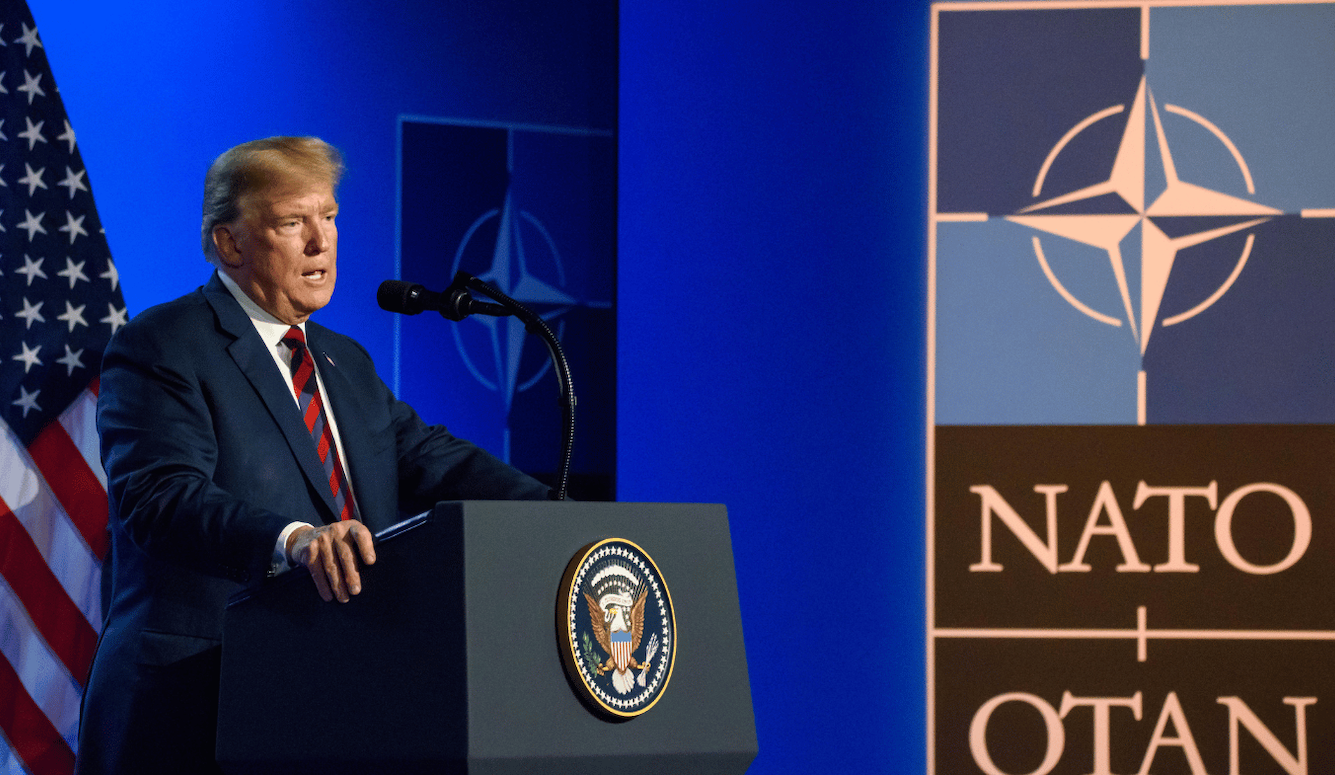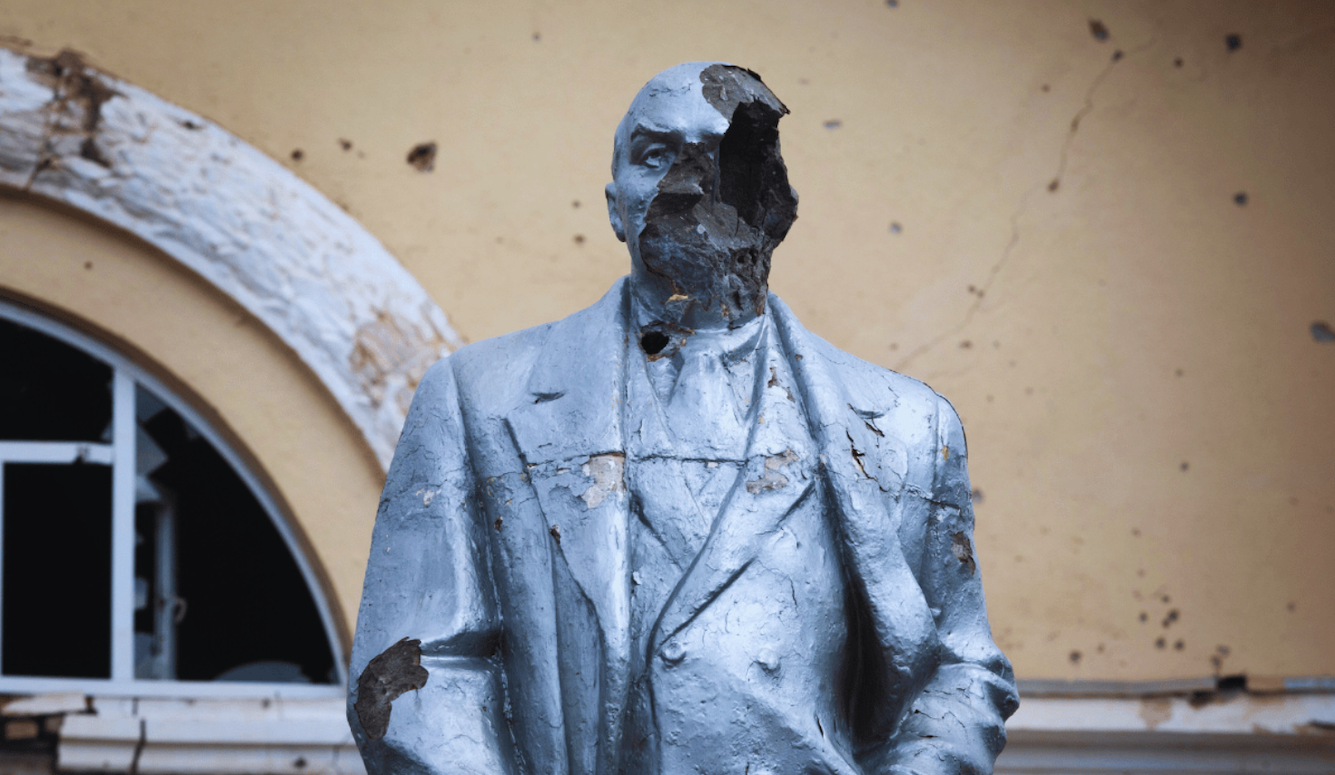Politics
NATO and the Return of Trump
If the United States abandons Europe, Beijing will be more emboldened than ever.

For the past couple of years, there has been a lot of anxious speculation about what will happen to the United States’ relationship with Europe if Trump wins a second term. European leaders are trying to “Trump-proof” NATO with pledges to increase military spending. A measure in the 2023 National Defence Authorisation Act prevents the president from unilaterally withdrawing from the alliance. Even if Trump doesn’t push for such a drastic step, his promise to “finish the process we began under my administration of fundamentally reevaluating NATO’s purpose and NATO’s mission” has raised urgent questions about the future of the alliance—and the transatlantic relationship more broadly—if he returns to the White House.
The gravest fear in Washington and European capitals is that Trump will pull the United States out of NATO altogether. “His goal here is not to strengthen NATO,” according to former Trump national security advisor John Bolton. “It’s to lay the groundwork to get out.” Trump repeatedly discussed withdrawing from NATO with administration officials when he was in office, and his criticism of the alliance has always gone far beyond complaints about defence spending among “free-riding” allies. In 2017, he described NATO as “obsolete.” He introduced doubt about the United States’ commitment to Article V, the collective defence provision of the NATO Charter. He has long viewed the system of American alliances as a protection racket, which is why he recently declared that the Russians should feel empowered to “do whatever the hell they want” to NATO members that are “delinquent” on defence spending.
Foreign-policy experts in Trump’s orbit say he will pursue a “radical reorientation” of the alliance. There are several elements of this reorientation, including a drastic reduction in the United States’ military presence in Europe and the creation of a two-tier system within the alliance (first proposed by Trump advisor Keith Kellogg) in which the United States would only provide Article V protection to countries that spend over two percent of their GDP on defence. But the most immediate policy shift would be toward Ukraine—Trump is reportedly interested in negotiating a deal with Vladimir Putin over how much stolen Ukrainian territory will be handed over to Russia. He’s also reportedly considering a pledge to Moscow that NATO won’t expand eastward, barring Ukraine and Georgia from entry.
This is likely what Trump has in mind when he promises to end the war before he even takes office (or “in 24 hours,” as he often puts it). He appears to believe that Kyiv will have no say in the matter, and that Ukrainian forces will stop fighting the moment he strikes a backroom deal with Putin to carve up their country and determine the fate of their political and security arrangements for decades to come. Even the Russians recognise that Trump’s plan to immediately end the war is a fantasy: “The Ukrainian crisis cannot be solved in one day,” Russian ambassador to the UN Vassily Nebenzia said in July.
Trump suggests he will lift US sanctions on Russia and Iran if he wins pic.twitter.com/oPRLRK4P77
— Kamala HQ (@KamalaHQ) September 5, 2024
Trump also blames the United States for the Ukrainian conflict. Beyond his frequent claim that Putin “never would have invaded Ukraine” on his watch, he also argues that the promise of NATO membership for Ukraine (originally made at the 2008 Bucharest summit) is “really why this war started.” Trump ignores Putin’s imperial ambitions—which he has been outlining ad nauseam for years—and assumes that Moscow only reacts to what the United States does. Similarly, he doesn’t believe the Ukrainians have any agency, which is why he thinks he can end the war with a phone call to the Kremlin.
It would be bad enough if Trump were merely delusional about what he could accomplish in the Oval Office. But his plan to abandon the United States’ commitments in Europe will inflict a potentially fatal blow on NATO, even if the US doesn’t withdraw from the alliance entirely. The transatlantic alliance will fracture at a time when Europe is still years away from being able to defend itself. Other American allies around the world, such as South Korea and Japan, will realise that the United States is no longer a reliable partner. And NATO’s deterrent power will be permanently undermined, which may encourage Putin to probe Europe’s defences further and directly challenge Article V, possibly with a military incursion into a small European state like one of the Baltics.
The United States has made European security a major strategic priority for the past three-quarters of a century—a period of unprecedented peace and stability on the continent. Trump would start unraveling that effort immediately upon retaking office.
Trump isn’t interested in strengthening American alliances, holding aggressive dictatorships accountable, or defending besieged democracies like Ukraine. His transactional, zero-sum worldview dismisses the possibility of countries cooperating on the basis of shared values and institutions. As far as Trump is concerned, there are no friends and enemies, only winners and losers.
This means that Trump’s commitment to institutions like NATO is always contingent on whether he believes the United States is “winning” in some sort of imaginary competition with its allies, and he has made it clear for many years that he doesn’t think this is the case. Despite significant political and institutional constraints that would make it difficult for Trump to pull the United States out of NATO, any attempt to do so would have devastating consequences for the cohesion of the alliance and the security of the democratic world. Putin and Xi Jinping would interpret such a deep fault line within NATO as a clear sign that Western resolve is crumbling. NATO’s newest members, Finland and Sweden, would be left to wonder whether the alliance will survive. The Baltic states would suddenly face an existential crisis, and the prospects for a secure and Western-oriented Ukraine would be much diminished overnight.

While Trump may decide to remain in NATO, he has repeatedly declared that he believes “NATO’s purpose and NATO’s mission” should be “fundamentally” altered. This is consistent with the plan outlined by Project 2025—a blueprint for Trump’s second term produced by the Heritage Foundation and a constellation of other conservative organisations. According to the Project 2025 manifesto, the next administration must “Transform NATO so that U.S. allies are capable of fielding the great majority of the conventional forces required to deter Russia while relying on the United States primarily for our nuclear deterrent, and select other capabilities while reducing the U.S. force posture in Europe.”
The most immediate problem with this strategy is that the United States’ European allies are simply not militarily powerful enough to deter Russia without American support. With its US$884 billion military budget, the United States is the anchor of NATO—American defence expenditures will comprise nearly 64 percent of the alliance’s total this year. There are currently over 100,000 US troops stationed in Europe, including around 20,000 who were sent to countries such as Poland to defend NATO’s eastern flank after Russia’s invasion of Ukraine. The top US commander in Europe, General Christopher Cavoli, recently testified to the House Armed Services Committee that infrastructure is in place to increase the number of troops if necessary.
Trump has long sought to reduce the United States’ military footprint in Europe. In the summer of 2020, he ordered the Pentagon to move almost 10,000 troops out of Germany and cap the total number of troops in the country at 25,000—down from 52,000. At the time, a senior US official told the Wall Street Journal that the decision reflected the “Trump administration’s long frustration with German policy.” A German defence official said, “We always knew Trump would lash out when he is under pressure domestically.” Germany is a cornerstone of the United States’ military infrastructure in Europe, and Trump wanted to disrupt operations there out of spite. As the Wall Street Journal reported: “Moscow is likely to welcome the open display of differences between two key North Atlantic Treaty Organization allies, U.S. experts said.”
It was dangerous for Trump to intentionally damage the United States’ relationship with vital NATO partners and undermine the security architecture of Europe in 2020, but abandoning our European allies in the middle of the largest conflict on the continent since World War II would be a historic mistake. What makes Trump’s plan to desert NATO in 2025 all the more vexing is that Europe has finally demonstrated a real commitment to building up its own defences.
While defence expenditures in NATO, Europe, and Canada increased by 2.5 percent in 2021, collective spending is expected to surge by nearly 18 percent this year. Just six NATO allies spent more than two percent of their GDP on defence in 2021, but this number has now spiked to 23. It will take time for the United States’ European allies to build up their defences, but they’re on the right trajectory. Withdrawing from Europe in an era of renewed great-power conflict and with war on NATO’s doorstep would be a calamitous misstep.
Trump’s hostility to NATO and his opposition to continued support for Ukraine will also put him in a much weaker negotiating position with Putin. If Trump takes office in January, Putin will conclude that time is on his side in Ukraine—without the United States, Europe won’t be able to supply the equipment Kyiv needs to continue fighting the war. Trump would give up all his leverage before negotiations even begin. What incentive will Putin have to take anything less than a maximalist position on Ukrainian territory and Kyiv’s ambitions to join Western political, economic, and security institutions?
The main MAGA rationale for retreating from NATO is that the resources dedicated to Europe should be shifted toward China. Trump’s vice presidential pick, Ohio senator J.D. Vance, frequently describes China as the “biggest threat” to the United States. He argues that Ukraine is a distraction from the “real issue, which is China,” and he has been calling for more weapons to be sent to Taiwan instead. As Semafor reports, Vance joined a “team of Trump advisers who have repeatedly called for the US to invest more military resources in the Indo-Pacific in an attempt to deter China.”
But weakness in Europe won’t project strength in Asia. The idea that surrendering to Putin and withdrawing from NATO will deter China is backwards. If the United States abandons Europe, Beijing will be more emboldened than ever. After all, Trump has long made the same argument about the United States’ East Asian allies that he makes about NATO—they don’t pay enough for America’s security guarantees, and they may have to get used to the idea that the United States won’t always be there to defend them. When Trump announced that the United States would remove thousands of troops from Germany, he was simultaneously embroiled in a dispute with South Korea over the cost of stationing US troops in the country. Former defence secretary Mark Esper later revealed that Trump demanded a “complete withdrawal” from South Korea. Despite the emphasis on Asia among would-be Trump administration officials, Taipei has no reason to expect anything different.
America’s allies don’t have to speculate about what a second Trump term would look like. While it’s unclear whether or not Trump would withdraw from NATO entirely, he has explicitly promised to betray Ukraine and reward Russia for launching a devastating imperial war against its neighbour. Meanwhile, Trump will punish NATO member states that are finally making historic investments in their own security by withdrawing US forces with no plan for how to replace them. Amid war in Europe and resurgent great-power conflict, this reversion to America First isolationism will inflict a permanent blow on the most successful military alliance in human history—as well as the liberal international order it has underpinned for three-quarters of a century.






